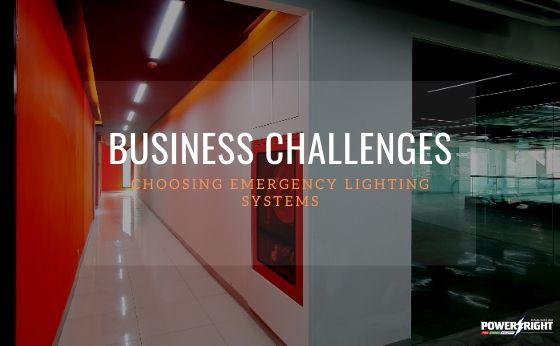
Installing emergency lighting systems is highly important, both for the first time building proprietors and seasoned owners who have a need to install new systems. These systems are a necessity in most public buildings, such as schools, hospitals, restaurants, and office buildings. They help people find the exit in cases of emergency where the main power fails. But every commercial building is set up differently, requiring diligence to choose the right emergency lights.
There are numerous kinds of emergency lighting that fall into two main categories: self-powered and centrally-powered. These categories are split up into the following common lights:
The type of emergency lighting you choose can be determined by a number of factors, including building size and design. At the very least, you will need appropriate exit signs in order to be in compliance with local fire safety regulations. It is not always easy to source the right emergency lighting systems. Read on to learn about some of the challenges that may be encountered.
The cost of an emergency lighting system is not just about how much you pay to purchase it. You also have to factor in the cost of installation, testing and maintenance. Self-powered lights are generally cheaper to buy initially. But the maintenance costs can quickly add up if your commercial building is large and has many of these emergency lights installed. On the other hand, centrally-powered emergency lights are generally more expensive to purchase, but testing and maintenance may be cheaper because it is only the main power source that needs to be tested.
Regardless of the type of emergency lights you choose, the overall cost can amount to quite a bit as explained above. With that said, if you choose lights that are not suitable for your building, they may cost you even more than necessary. That’s why it is recommended to consult a recommended power company to assess the needs of your particular building and determine what type of exit signs and lights are appropriate.
The challenge of maintaining emergency lighting systems involves finding competent personnel and following a strict schedule. Fire safety regulations require your exit signs and emergency lights to be checked several times per year, so it would be ideal to, once again, have a reputable company or individual set a schedule to test and maintain your lights.
The quality of the emergency lights you install will have a direct effect on how often you need to change or install new lights. Low-quality lights may also fail to work properly during an emergency. When looking for high-quality but affordable emergency lights, you want to choose the best mix of value (based on customer feedback, safety ratings, etc.) and price.
The batteries of centrally-powered lights can last anywhere from 5 – 25 years while those of self-contained lights can range from 2 – 4 years. How long your particular lights last will depend on the quality of the battery itself, as well as the energy efficiency of the lights. Some lights use incandescent lamps, others use light-emitting diodes (LEDs) which are considered more energy efficient. Since testing requires the lights to be turned on, the energy efficiency of the lights you choose will likely have an effect on battery life.
Ensuring the safety of your commercial building can be a challenging experience. Trusting the installation, testing and maintenance of emergency lighting systems to a reputable power company, however, can help to mitigate many issues that may arise.